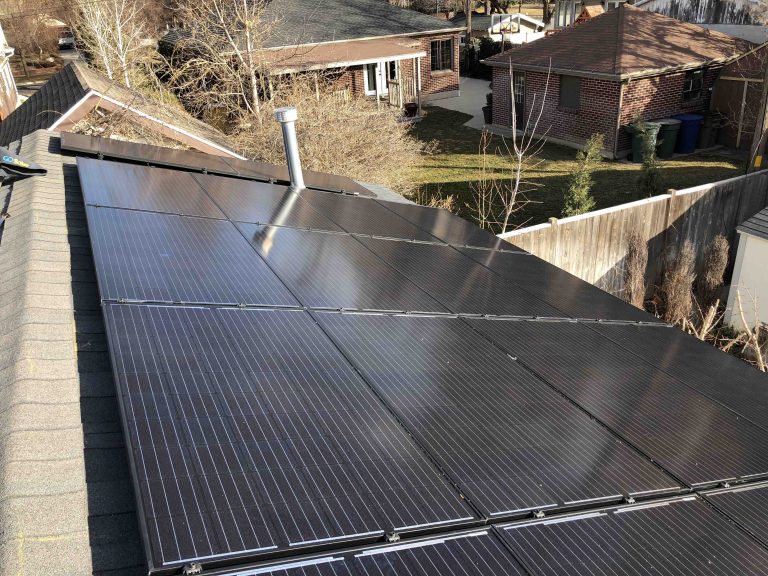Passive vs. Active Solar in Utah

Passive solar is the use of different building materials to control the heat from the sun. Passive solar design is when homes use building materials such as insulation and energy-efficient windows to help the home heat and cool itself.
Active solar uses the sun to generate electricity through the help of solar panels. Because of how solar panels work, the light from the sun generates an electric current in the solar panel. The direct current generated by the solar panel is then switched to alternating current and used to power the home.
While photovoltaics use of active solar recently developed over the last several decades, passive solar implementation occurred over several centuries. While these two modes of solar power are ingenious, they are used for different purposes and while neither is better than the other, each works better than the other under certain conditions.
However, active solar is best leveraged with passive solar, and passive solar is best leveraged in tandem with active solar, too.
Let’s take a look at both of these solar energy sources and the pros and cons of each. Examining the pros and cons will give Utah homeowners the full picture so they can make the best decision.
Passive Solar Energy in Utah
Passive solar is increasingly common in Utah, but it isn’t extremely common.
For passive solar technology to work, it needs to absorb heat, store it for use later, distribute and control it through heat-absorption and blocking materials. Together these materials help the homeowner control the temperature of their home with decreased need for HVAC systems.
Passive solar can heat homes or smaller rooms or items on the property like a swimming pool or a water heater. How much passive solar used depends on the needs of the homeowner and the location of the home.
Benefits of Passive Solar
One of the many benefits of passive solar is that it can store heat and use it later. The stored use of passive solar allows the home to depend less on the utility company and more on its own energy efficiency.
Negatives of Passive Solar
Passive solar homes do have downfalls. E.g., passive solar homes are best for new builds. Secondly, passive solar-powered homes don’t generate electricity.
Active Solar Energy in Utah
Utah has many active solar homes. The explosion of residential solar is due to the wide range of things that active solar can power and the solar savings it affords Utah homeowners.
Everything that runs on electricity can run with residential solar. Homes that use solar either eliminate or significantly reduce their electricity bills.
Benefits of Active Solar
Active solar has many benefits. Some of these include the ability to install on most home types and energy savings.
Negatives of Active Solar
One flaw of active solar is that it doesn’t store excess solar generation, at least not by itself. Battery backup is the best way to solve this problem because it allows homeowners to have full control over their power and provides access to it during power outages. Homeowners need to look into the battery back up options that their solar installer offers.
Why Choosing Active Solar Design is Better For Utah Homes
There are a couple of reasons why active solar is a better fit for Utahans. E.g., photovoltaics allow homeowners to save on more than heating and cooling.
Active solar can also be used on more home types than its passive solar counterpart. The versatility of residential solar allows more homeowners to enjoy the full benefits of this solar option.
The last reason why active solar is a better fit for Utahans is that with battery backup, it can power a home during an outage.



Send a Message
Oops! We could not locate your form.